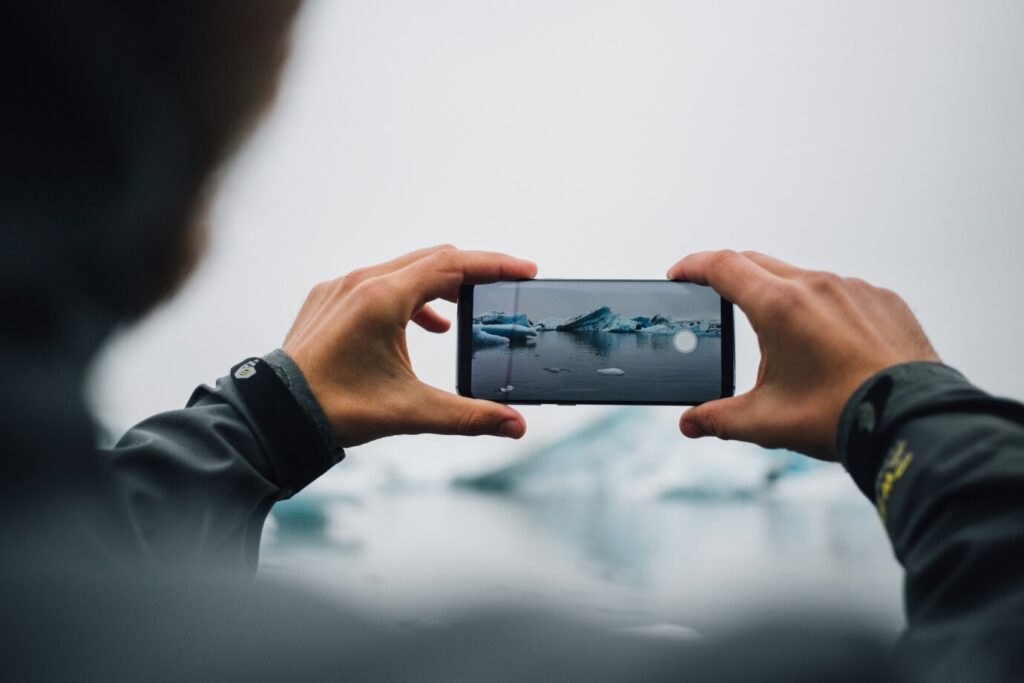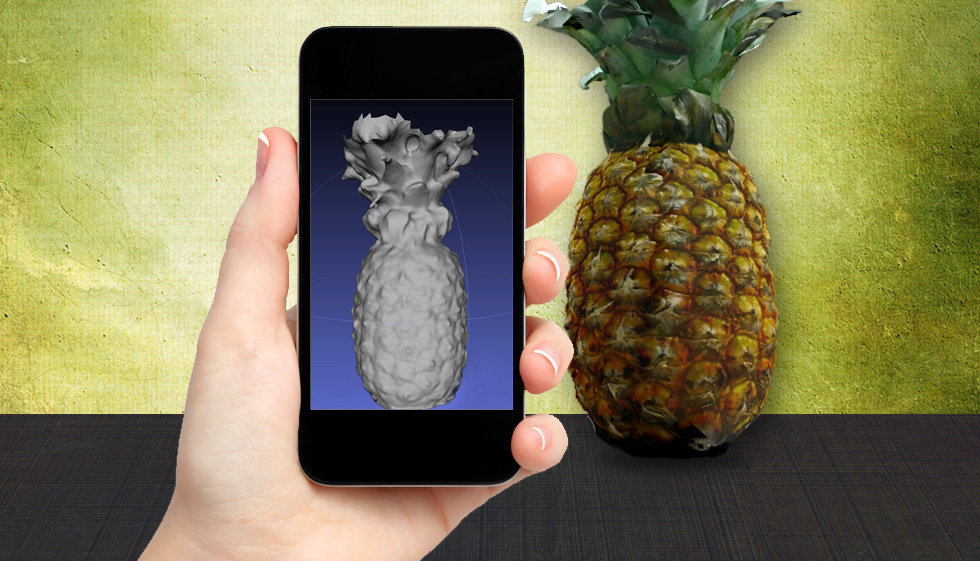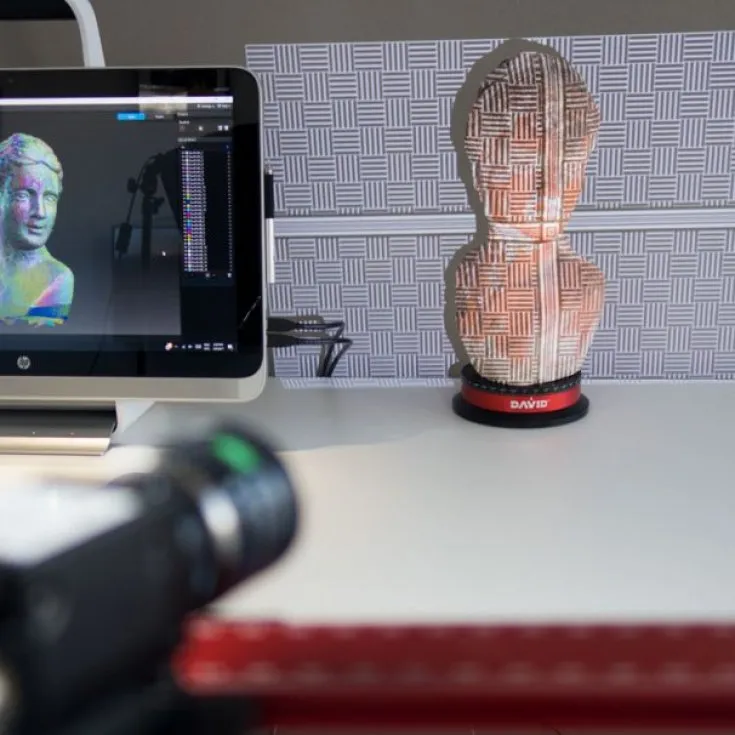Table of Contents
Introduction
Ever since the first mobile devices hit the market, their functionality has grown exponentially. With each passing year, smartphones are getting smarter and smarter, adding new technologies and features. One of the latest and most exciting advancements in this field is the introduction of 3D scanning technology right into handheld devices. But where did this desire for a three-dimensional world on our phone screen come from?

It may seem like a new trend to some, but the foundations of 3D scanning were laid much earlier. With the rise of augmented reality technology and the need for more realistic 3D models, a means of creating these models quickly and affordably was needed. And who better to accomplish this task than a device we always have on hand?
3D scanning on a smartphone is not just a “new toy” for technology enthusiasts. It’s a tool that opens up a host of possibilities for the user, from creating custom avatars and interior design to industrial and medical applications.
To conclude this brief excursion into the history and significance of 3D scanning, we can say that it is not just a fashion trend, but also a practical tool that is changing the way we think about the possibilities of modern technology.
How Smartphone 3D Scanning Works
3D scanning on a smartphone is based on a combination of modern sensors and high-tech cameras. Over the past few years, device manufacturers have intensively integrated various sensors into their devices, which has made it possible to significantly improve and speed up the 3D scanning process.

The Infrared Camera: The main element responsible for 3D scanning is the infrared (IR) camera. It is used to create image depth by emitting IR signals and recording their reflections from objects. This data, combined with information from the main smartphone camera, allows you to create a 3D model of the scene or object.
Additional Sensors: In addition to the IR camera, other sensors such as the accelerometer and gyroscope play an important role. They track the position and movement of the phone in space, which ensures higher scanning accuracy and correction of possible distortions.
SLAM Technology: The core technology behind this process is called SLAM (Simultaneous Localization and Mapping). This is an algorithm that allows the device to simultaneously determine its position and build a map of the surrounding space, creating a detailed 3D model in real time.
In general, the combination of modern sensors and advanced technologies turns the smartphone into a powerful 3D scanning tool available to every user.
Advantages and Limitations of Smartphone 3D Scanning
Like any technology, smartphone 3D scanning has its advantages and limitations. Let’s dive into a breakdown of what makes this method so attractive, as well as in what aspects it may be inferior to professional solutions.
Advantages
- Accessibility: Most people today have smartphones. This ubiquity makes 3D scanning accessible to a wide range of users without the need for specialized equipment.
- Mobility: Smartphones are easy to carry around. This allows you to scan anywhere and anytime.
- Intuitiveness: Most 3D scanning apps are designed to be as intuitive and user-friendly as possible for the end user.
Limitations and Challenges
- Accuracy: Despite advanced technology, smartphones still cannot compete in accuracy with professional 3D scanners. This can be critical for tasks that require high detail.
- Limited resolution: Smartphone sensors and cameras have their own physical limitations, which can affect the quality of the final 3D model.
- Lighting and external factors: Proper lighting and absence of reflections or obstacles are critical for effective 3D scanning on a smartphone.
In conclusion, despite its limitations, 3D scanning on smartphones offers incredible opportunities for everyday users. It becomes a bridge between the ordinary consumer and the world of 3D modeling, opening doors to a world that was previously only accessible to professionals.
Comparison with Professional 3D Scanners
When it comes to 3D scanning, it’s important to understand the difference between the capabilities of a smartphone and a professional 3D scanner. Both tools have their unique advantages and disadvantages that determine their use in different situations.

Differences in Accuracy and Detail: Professional 3D scanners typically offer high accuracy and detail. They are equipped with specialized sensors, lasers, and optical systems that allow them to create 3D models with high resolution and minimal distortion. In contrast, smartphones, although they have impressive technology, are still inferior in terms of accuracy due to the limited size and capabilities of their sensors and cameras.
When to Use a Smartphone and When to Use Professional Equipment?
The choice between a smartphone and a professional scanner depends largely on the specific task at hand:
Smartphone: If you need to quickly capture an object or scene, create a basic 3D model, or just need a portable tool for non-professional use, a smartphone is a great choice. It’s perfect for hobbies, interior design, or creating custom avatars.
Professional 3D Scanner: For tasks that require high precision, such as industrial manufacturing, archaeology, medicine, or architectural modeling, a professional 3D scanner is a must. Its high resolution and accuracy provide detailed reproduction of objects, which is critical in these fields.
So while smartphones are becoming more advanced every year, professional 3D scanners are still an indispensable tool in certain fields.
Popular Apps and Tools for 3D Scanning on Smartphone
In an era of rapid technological advancement, there are many apps available in the market for 3D scanning on a smartphone. These tools diversify the device’s range of capabilities, making 3D modeling accessible to everyone.
Artec 3D: One of the leaders in 3D scanning, offers professional solutions for creating high-quality 3D models. Recently, the company presented mobile solutions that allow smartphone users to get high-quality scans on the go.
| Application | Main Features | Advantages |
|---|---|---|
| Artec Mobile | 3D scanning, editing, export | High accuracy, cloud integration |
| Scandy Pro | 3D scanning, volumetric video | Easy AR integration, fast scanning |
| Qlone | 3D scanning, AR, export | Intuitive interface, wide export formats |
| Trnio | 3D scanning, cloud storage | Ease of use, social features |
As you can see, each application offers unique features and capabilities. For example, Artec Mobile features high scanning accuracy, making it a great choice for professional applications. While Scandy Pro and Qlone may be more suitable for hobbyists and artists looking to integrate 3D scanning into their creative projects.
The choice of application depends on the specific needs of the user, but with the variety of tools available, everyone will be able to find the right product for them.
Practical Applications and Use Cases
3D scanning on a smartphone pushes the boundaries of what previously seemed impossible, turning complex procedures into routine activities. Let’s look at practical applications of this technology in everyday life and in the professional sphere.
In Everyday Life
- Interior Design: Users can scan a room and apply different furniture and décor options in real time before making a purchase decision.
- Creating Avatars: 3D scan a face or body to create personalized avatars for games or social media.
- Education: Students can create 3D models for projects or to study objects more visually.
Professional and Industrial Applications
- Architecture and Construction: Architects and engineers can quickly scan construction sites or buildings to create accurate models and plan work.
- Medicine: Doctors can use 3D scanning to create detailed models of a patient’s organs or body parts for surgical planning or education.
- Art and Restoration: Artists and restorers can scan works of art to create exact replicas or archive their condition.
- Industrial Design: Engineers can quickly prototype and test parts using 3D models created from real-world objects.
In conclusion, it is worth noting that 3D scanning on a smartphone opens up a wide range of possibilities, from simple home tasks to complex professional challenges. The technology continues to evolve, and we can expect its applications to become even more diverse in the coming years.
The Future of 3D Scanning on Smartphones
3D scanning on smartphones is just beginning its journey, and the advanced technologies emerging every year only confirm this. So what does the near future have in store for us?
Trends and Innovations in Development
- Improved Sensors: Manufacturers are actively working on more powerful and compact sensors, which promises even higher accuracy and scanning speeds.
- Augmented Reality (AR) Integration: Smartphones will interact even more closely with AR, enabling the creation of complex interactive scenes based on real-time 3D models.
What to Expect in the Near Future?
- Accessibility to a Wider Audience: Technology prices will decrease, making 3D scanning accessible to even more users.
- Deeper Integration with Other Devices: Smartphones are expected to work in sync with other gadgets, such as AR glasses, providing a more immersive and realistic experience.
In conclusion, the future of 3D scanning on smartphones looks promising. Technological advances and growing interest in this field ensure that we are in for some amazing new opportunities and breakthroughs in this area.
Conclusion
3D scanning on smartphones has become a bridge between high-tech innovation and everyday life. From simple household tasks to complex professional challenges, the capabilities of this technology are constantly growing. Every year, new improvements are expected, making the process even more accurate and accessible. We invite you not only to follow this trend, but also to actively experiment and share your experiences and ideas. After all, perhaps it is you who will discover something new in the world of 3D scanning!
Helen’s passion is 3D Technology. She always loved hi-tech but 3D Reality was something that she never thought of before. She attended the first course on 3D printing technology and she was immediately fascinated by it.
